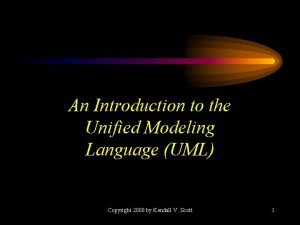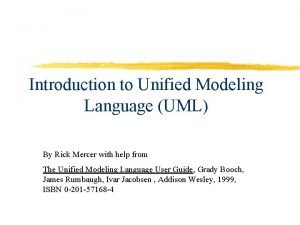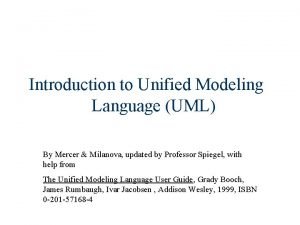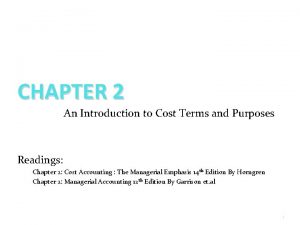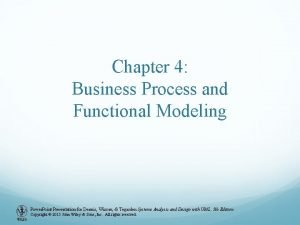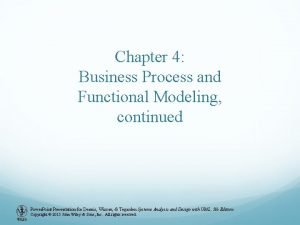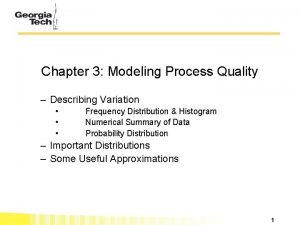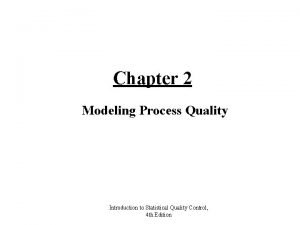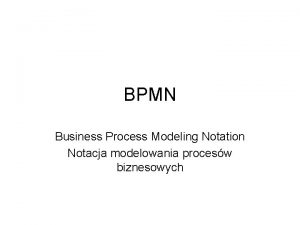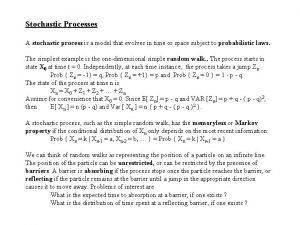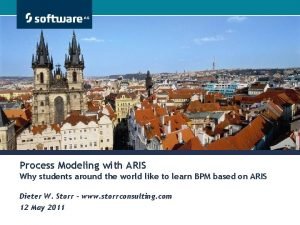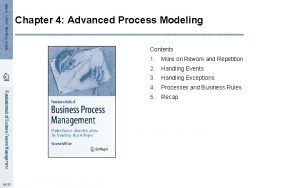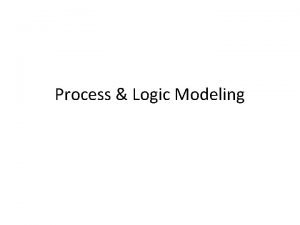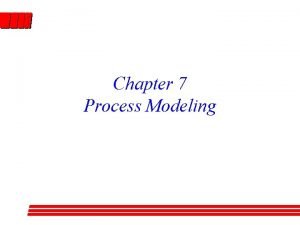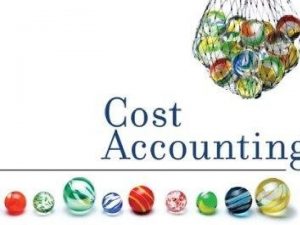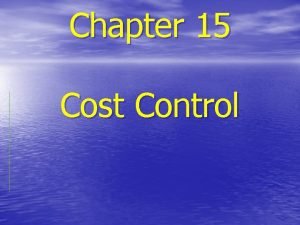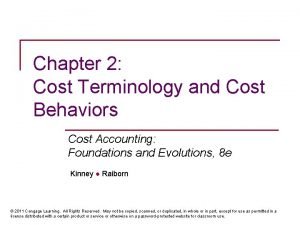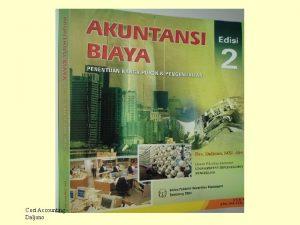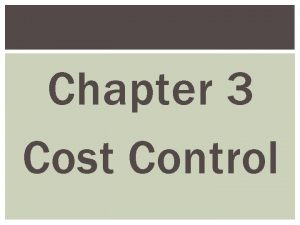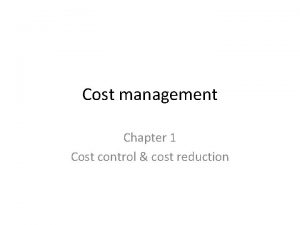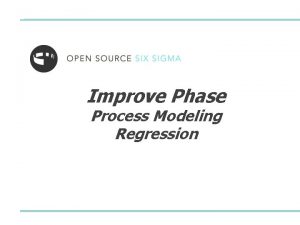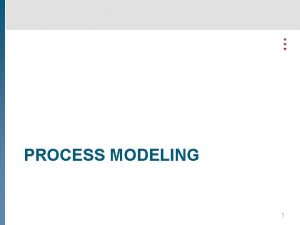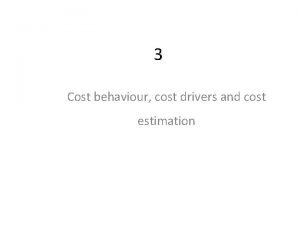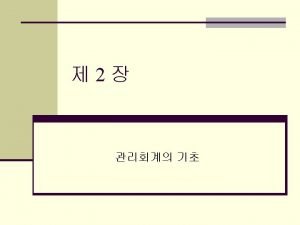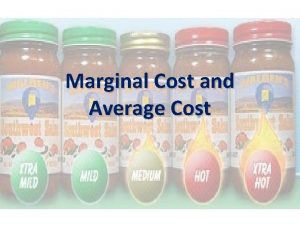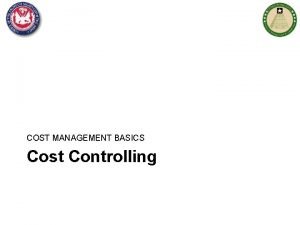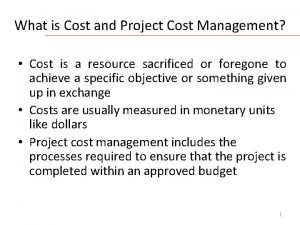The Cost Modeling Process Chapter 5 1 Introduction


















- Slides: 18

The Cost Modeling Process Chapter 5 1

Introduction • What makes a good cost model? – Good Statistics – Quality Data – Relevant Data – Analogous or Applicable Data – “Causality” between independent and dependent variables 2

The Cost Estimating Process • Estimates are always based on history…otherwise, they are mere guesses. History (Data) Tools Predict Future • We use the tools to make the historical data look as much as possible like the future system. 3

LCCE Process Understand the Assignment Define the Scope • Cost Element Structure • Life Cycle Duration Identify Data Sources & Collect Data Generate Final Documentation / Presentation Develop & Document LCC Elements Determine Cost Estimating Methodologies Perform Sensitivity Analysis 4

The Modeling Process • • • Identification of potential cost drivers Specification of functional forms Selection of analogous systems Data Collection Data Normalization 5

Identification • Determine what “causes” cost for each cost element • Question experts from government and industry • Identify major cost drivers – Technology – Size – Performance 6

Causality (Correlation) 7

Building a Cost Estimating Relation (CER) 8

Cost Drivers • Technology – New, high risk technology is generally more expensive than existing technology – Difficult to capture • Size – Generally, the bigger, the more expensive – Easy to capture • Performance – The greater the performance, the higher the cost – Also easy to capture 9

Specification • Determination of functional form • The functional form must make sense • Avoid letting the data determine the shape of the line (unless you have a lot of it) • Get engineering opinions if possible • Remember the goal is to obtain good predictions, not good statistics • Make sure cost behaves as expected when the cost driver varies 10

Specification Increasing at a steady rate Decreasing at a decreasing rate Decreasing at a steady rate Increasing at an increasing rate Increasing at a decreasing rate Decreasing at an increasing rate 11

Selecting Analogous Systems • Ideally, we would like systems that smell, taste and look like the items we will be estimating • In reality, Do. D has few systems which employ similar technology, performance and size • In general, do not overly constrain yourself when selecting analogous tasks • In order to be called “analogous” the system need only have a similar cost driver and a similar functional form when mapped to cost 12

Collecting Data • Select systems relevant to system being costed – Choose analogous systems or components based upon elements identified/defined in WBS – Typical cost drivers include physical and performance characteristics » physical characteristics: weight, volume, number of holes drilled, number of parts to assemble, materials of composition, etc. » performance characteristics: power, thrust, bandwidth, range, speed, etc. – Improvements in technology are an extremely important consideration » measures of technology include: % composite material, radar cross section, etc. 13

Collecting Data • Identify relevant historical cost, technical, and programmatic data to be collected – Program schedule, development quantity, production quantity – Physical and performance data from operating (NATOPS) manuals, manufacturer’s specifications, test data 14

Data Sources • Data sources include any or all of the following: contractor accounting records, contractor cost data reports (CCDR), cost performance reports (CPR), cost/schedule status reports (C/SSR), cost proposals/bids, or other sources within industry and government – Common denominator is contractor 15

Data Analysis • Review data collected to insure homogeneity (i. e. , standard quantities, constant $), adequate coverage of all WBS elements, consistency with proposed system complexity • Allocate data to WBS elements – Organize data on a consistent basis (system to system, contractor to contractor, WBS element to WBS element) – Ideally would like to distinguish between recurring and non-recurring costs, support costs, direct and indirect costs, profit • Identify problems and anomalies with the data – Gaps in data, jumps in technology, type of program (design to cost vs. other), major failures in development/testing phase, strike by work force, etc. 16

Data Analysis • Normalize the data as necessary – Consistent units/elements of cost – Adjust for inflation – Develop learning curve to adjust for quantity differences » 1 st unit cost – Account for absent cost items, remove inapplicable cost items 17

Develop Cost Estimate • Four common approaches to developing a Cost Estimating Relationship (CER) – Analogy – Engineering cost estimate – Expert opinion – Statistical/parametric approach 18
 Modeling and role modeling theory
Modeling and role modeling theory Relational vs dimensional data modeling
Relational vs dimensional data modeling Job order cost system vs process cost system
Job order cost system vs process cost system Introduction to the unified modeling language
Introduction to the unified modeling language Introduction to modeling and simulation
Introduction to modeling and simulation Pemodelan dan simulasi
Pemodelan dan simulasi Introduction to unified modeling language
Introduction to unified modeling language Mercer oneview login
Mercer oneview login An introduction to cost terms and purposes
An introduction to cost terms and purposes What is process modeling in system analysis and design
What is process modeling in system analysis and design Business process and functional modeling
Business process and functional modeling Business process and functional modeling
Business process and functional modeling Modeling process quality
Modeling process quality Modeling process quality
Modeling process quality Describe data and process modeling concepts and tools
Describe data and process modeling concepts and tools Bpmn xor
Bpmn xor Stochastic process modeling
Stochastic process modeling Function allocation diagram aris
Function allocation diagram aris Advanced process modelling
Advanced process modelling



